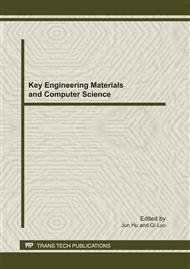p.58
p.64
p.69
p.75
p.81
p.86
p.92
p.97
p.103
Fatigue Response of Centrally Notched Ti/APC-2 Nanocopmosite Laminates due to Two-Step Loads
Abstract:
The Ti/AS-4 Carbon Fiber/PEEK (Ti/APC-2) cross-ply nanocomposite laminates were fabricated. The Ti thin sheets were surface treated by anodic oxidation of electroplating to achieve good bonding with APC-2 laminates. Nanoparticles SiO2 were dispersed uniformly on the interfaces of APC-2 with the optimal amount of 1 wt%. The modified diaphragm curing process was adopted to fabricate the hybrid panels. Then, the panels were cut into samples. The centrally notched samples of hole diameter 6mm. First, we obtained the mechanical properties of unnotched samples as base-line data due to tensile and cyclic tests. Then, we performed both tests for the notched samples and found that the ultimate load was reduced 53%, nominal stress 38%, stiffness 3%, and also the fatigue lives compared with unnotched ones. Next, the two-step loading tests, such as high→low and low→high tests, were conducted. The average values of Miner’s sum were less than 1.0 for both two-step tests. The total lives were in the range of 5780~29048 cycles for both tests. That evidently demonstrates the notched samples drastically drop the mechanical properties and lives from high cycle fatigue to low cycle fatigue.
Info:
Periodical:
Pages:
81-85
Citation:
Online since:
August 2011
Authors:
Keywords:
Price:
Сopyright:
© 2011 Trans Tech Publications Ltd. All Rights Reserved
Share:
Citation:


